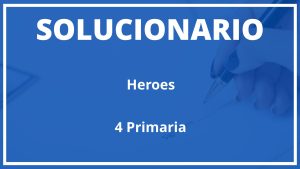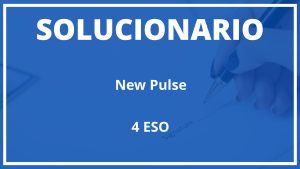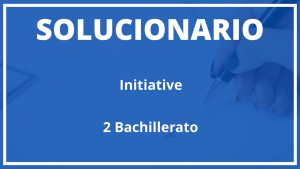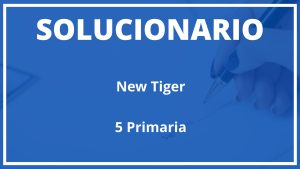
Indice de contenidos del Solucionario del Libro Ingles New Pulse MacMillan 3 ESO
Unidad 1: Me, myself and I
1.1 I like, don’t like, love. Present simple of to be. Affirmative, negative and questions. Pronouns: I, you, he, she, it, we, you, they. Short answers. Verb to have. Possessive adjectives and pronouns. There is/ There are. Some and Any. A/ An. The. Prepositions of place. To want. Can.
1.2 To go. To be going to. Present continuous. Affirmative, negative and questions. Short answers. Prepositions of time. Present simple and continuous. To have. Possessive adjectives and pronouns. There is/ There are. Some and Any. A/ An. The.
1.3 To be. Have got. Affirmative, negative and questions. Short answers. Possessive adjectives and pronouns. There is/ There are. Some and Any. A/ An. The. Prepositions of place.
Unidad 2: Family and friends
2.1 To be. Have got. Affirmative, negative and questions. Short answers. Possessive adjectives and pronouns. There is/ There are. Some and Any. A/ An. The. Prepositions of place.
2.2 To have. Present simple. Affirmative, negative and questions. Short answers. Possessive adjectives and pronouns. There is/ There are. Some and Any. A/ An. The. Prepositions of time. Frequency adverbs: always, usually, often, sometimes, hardly ever, never. To be going to.
2.3 To be. Have got. Present simple and continuous. Affirmative, negative and questions. Short answers. Possessive adjectives and pronouns. There is/ There are. Some and Any. A/ An. The. Prepositions of place.
Unidad 3: Our world
3.1 To be. Have got. Present simple and continuous. Affirmative, negative and questions. Short answers. Possessive adjectives and pronouns. There is/ There are. Some and Any. A/ An. The. Prepositions of place.
3.2 To have. Present simple. Affirmative, negative and questions. Short answers. Possessive adjectives and pronouns. There is/ There are. Some and Any. A/ An. The. Prepositions of time. Frequency adverbs: always, usually, often, sometimes, hardly ever, never.
3.3 To be. Have got. Present simple and continuous. Affirmative, negative and questions. Short answers. Possessive adjectives and pronouns. There is/ There are. Some and Any. A/ An. The. Prepositions of place.
Unidad 4: Celebrations
4.1 To be. Have got. Present simple and continuous. Affirmative, negative and questions. Short answers. Possessive adjectives and pronouns. There is/ There are. Some and Any. A/ An. The. Prepositions of place.
4.2 To have. Present simple. Affirmative, negative and questions. Short answers. Possessive adjectives and pronouns. There is/ There are. Some and Any. A/ An. The. Prepositions of time. Frequency adverbs: always, usually, often, sometimes, hardly ever, never.
4.3 To be. Have got. Present simple and continuous. Affirmative, negative and questions. Short answers. Possessive adjectives and pronouns. There is/ There are. Some and Any. A/ An. The. Prepositions of place.
Unidad 5: My life
5.1 To be. Have got. Present simple and continuous. Affirmative, negative and questions. Short answers. Possessive adjectives and pronouns. There is/ There are. Some and Any. A/ An. The. Prepositions of place.
5.2 To have. Present simple. Affirmative, negative and questions. Short answers. Possessive adjectives and pronouns. There is/ There are. Some and Any. A/ An. The. Prepositions of time. Frequency adverbs: always, usually, often, sometimes, hardly ever, never.
5.3 To be. Have got. Present simple and continuous. Affirmative, negative and questions. Short answers. Possessive adjectives and pronouns. There is/ There are. Some and Any. A/ An. The. Prepositions of place.
Unidad 6: Jobs
6.1 To be. Have got. Present simple and continuous. Affirmative, negative and questions. Short answers. Possessive adjectives and pronouns. There is/ There are. Some and Any. A/ An. The. Prepositions of place.
6.2 To have. Present simple. Affirmative, negative and questions. Short answers. Possessive adjectives and pronouns. There is/ There are. Some and Any. A/ An. The. Prepositions of time. Frequency adverbs: always, usually, often, sometimes, hardly ever, never.
6.3 To be. Have got. Present simple and continuous. Affirmative, negative and questions. Short answers. Possessive adjectives and pronouns. There is/ There are. Some and Any. A/ An. The. Prepositions of place.
Unidad 7: Holidays
7.1 To be. Have got. Present simple and continuous. Affirmative, negative and questions. Short answers. Possessive adjectives and pronouns. There is/ There are. Some and Any. A/ An. The. Prepositions of place.
7.2 To have. Present simple. Affirmative, negative and questions. Short answers. Possessive adjectives and pronouns. There is/ There are. Some and Any. A/ An. The. Prepositions of time. Frequency adverbs: always, usually, often, sometimes, hardly ever, never.
7.3 To be. Have got. Present simple and continuous. Affirmative, negative and questions. Short answers. Possessive adjectives and pronouns. There is/ There are. Some and Any. A/ An. The. Prepositions of place.
Unidad 8: Food
8.1 To be. Have got. Present simple and continuous. Affirmative, negative and questions. Short answers. Possessive adjectives and pronouns. There is/ There are. Some and Any. A/ An. The. Prepositions of place.
8.2 To have. Present simple. Affirmative, negative and questions. Short answers. Possessive adjectives and pronouns. There is/ There are. Some and Any. A/ An. The. Prepositions of time. Frequency adverbs: always, usually, often, sometimes, hardly ever, never.
8.3 To be. Have got. Present simple and continuous. Affirmative, negative and questions. Short answers. Possessive adjectives and pronouns. There is/ There are. Some and Any. A/ An. The. Prepositions of place.
Unidad 9: Sports
9.1 To be. Have got. Present simple and continuous. Affirmative, negative and questions. Short answers. Possessive adjectives and pronouns. There is/ There are. Some and Any. A/ An. The. Prepositions of place.
9.2 To have. Present simple. Affirmative, negative and questions. Short answers. Possessive adjectives and pronouns. There is/ There are. Some and Any. A/ An. The. Prepositions of time. Frequency adverbs: always, usually, often, sometimes, hardly ever, never.
9.3 To be. Have got. Present simple and continuous. Affirmative, negative and questions. Short answers. Possessive adjectives and pronouns. There is/ There are. Some and Any. A/ An. The. Prepositions of place.
Unidad 10: In the news
10.1 To be. Have got. Present simple and continuous. Affirmative, negative and questions. Short answers. Possessive adjectives and pronouns. There is/ There are. Some and Any. A/ An. The. Prepositions of place.
10.2 To have. Present simple. Affirmative, negative and questions. Short answers. Possessive adjectives and pronouns. There is/ There are. Some and Any. A/ An. The. Prepositions of time. Frequency adverbs: always, usually, often, sometimes, hardly ever, never.
10.3 To be. Have got. Present simple and continuous. Affirmative, negative and questions. Short answers. Possessive adjectives and pronouns. There is/ There are. Some and Any. A/ An. The. Prepositions of place.
Soluciones del Libro Ingles New Pulse MacMillan 3 ESO Photocopiable PDF
¿Qué es y cómo se usa el Solucionario del Libro Inglés New Pulse MacMillan 3 ESO Photocopiable PDF
El Solucionario del Libro Inglés New Pulse MacMillan 3 ESO es una herramienta muy útil para estudiantes y profesores de inglés. Proporciona una manera fácil y eficiente de verificar las respuestas del libro de texto, así como de identificar errores y obtener pistas para solucionar problemas. También es útil para el estudio personal y para la enseñanza.
El Solucionario está disponible en línea y se puede descargar e imprimir. También se puede encontrar en la tienda de libros Macmillan. Los estudiantes y profesores pueden acceder al Solucionario a través del sitio web de Macmillan Education.
¿Cómo se usa el Solucionario?
El Solucionario se puede usar de varias maneras. Se puede utilizar como una herramienta de verificación de respuestas, para ayudar a identificar errores y obtener pistas para solucionar problemas. También se puede usar para el estudio personal o para la enseñanza. El Solucionario se puede usar de forma interactiva o imprimible.
Interactive
La versión interactiva del Solucionario se puede usar en línea o descargar e imprimir. Se puede acceder a la versión interactiva a través del sitio web de Macmillan Education. La versión interactiva del Solucionario proporciona una manera fácil y eficiente de verificar las respuestas del libro de texto, así como de identificar errores y obtener pistas para solucionar problemas. También es útil para el estudio personal.
Imprimible
La versión imprimible del Solucionario se puede descargar e imprimir. Se puede acceder a la versión imprimible a través del sitio web de Macmillan Education. La versión imprimible del Solucionario proporciona una manera fácil y eficiente de verificar las respuestas del libro de texto, así como de identificar errores y obtener pistas para solucionar problemas. También es útil para el estudio personal y para la enseñanza.





